Hanukkah is the joyous festival of lights, hope, and miracles. It begins on December 2nd this year and runs until December 10th. Hanukkah, which means dedication in Hebrew, celebrates the rededication of the Holy Temple in Jerusalem after a small group of Jewish fighters, lead by Judah Maccabee, fought and drove the occupying Greeks from the Holy Land. After, there was only enough oil to last one night for relighting the eternal flame in the Holy Temple, but miraculously, the oil lasted for 8 nights, until new oil arrived.
There are many excellent picture books about Hanukkah, but here is a round-up of some of my favorites.
All-of-a-Kind Family Hanukkah by Emily Jenkins, illustrated by Paul O. Zelinsky
Schwartz & Wade, 2018, 40 pages
It's Hanukkah 1912 on the Lower East Side of NYC and the five all-of-a-kind girls, Ella, 12, Henny, 10, Sarah, 8, Charlotte, 6, and Gertie, 4, are very excited. Hanukkah means lightening the Menorah and eating Mama's wonderful latkes with applesauce that she only makes once a year. Everyone is busy with preparing the ingredients for the latkes except Gertie, who's still just a little too young. Mad, Gertie storms off to the bedroom and hides under the bed. She's sure that they'll be sorry when they can't find her. But then Papa comes home and begins looking for her. Will he be able to find Gertie so that she can to the help him with the most important job, lighting the menorah?
This is such a lovely family centered picture book. Everyone works together to make their Hanukkah celebration a joyous time, from working in the kitchen to lighting the menorah in the window for everyone to see. Emily Jenkins and Paul Zelinsky have really managed to capture the feeling of warmth and togetherness of this Eastern European immigrant family that runs throughout the original Sydney Taylor novels. Not an easy task when you are dealing with such a beloved classic series. And this is the perfect way to introduce younger readers to the All-of-a-Kind stories. I just love Zelinsky's boldly colored digital illustrations and the way they really bring the all-of-a-kind family and the Lower East Side to life.You'll also find lots of additional information about Hanukkah and the All-of-a- Kind novels in the back matter, which includes a glossary of Yiddish terms.
You can also find a detailed Educator Guide HERE
And you can download and print three illustrations from the story for your young readers to color HERE
And if Mama's potato latkes made your mouth water the way they did mine, and you would like to make some, too, you can find Emily Jenkins' favorite recipe (with comments from Paul Zelinsky) HERE
What a wonderful Hanukkah gift this book would make.
A Great Miracle Happened There: A Chanukah Story by Karla Kuskin,
illustrated by Robert Andrew Parker
Willa Perlman Books, 1993, 32 pages
This is really one of my favorite kind of story - it has the kind of flavor of an old Jewish folktale even though it is relatively new. The Mayor of Lublin arrives in Chelm with a gift for the people there - a giant menorah, as big as if not bigger than a tree. After lighting it for the first night of Hanukkah, the people of Chelm decide they had to thank the Mayor of Lubin for such a glorious gift. On the second night of Hanukkah, they decided to send the Mayor some delicious latkes made by Rivka the Cook. Shmulik was given the job of delivering the latkes, but they smell so good, he eats them up on the road. Each night of Hanukkah, the people of Chelm decide on a new way to thank the Mayor, and each day it just goes wrong. Finally, Yitzi, the son of Avrum, comes up with the perfect way to let the Mayor know who grateful the people of Chelm are for his wonderful gift. The villagers have been so busy trying to think of ways to thank him that they still hadn't sung any Hanukkah songs. So, on the last night of Hanukkah, Yitzi suggests that they take the menorah up to the top of their highest hill, light the eight candles, and sing Hanukkah songs while the Mayor looks on from an opposite hill near Lubin. Sure enough, the Mayor is quite moved by what he sees and the people's gratitude. You might be interested to know that Chelm, in Jewish folklore, is a town of good-hearted people who sometimes act rather foolishly, and Ungar has captured that perfectly in this story. The illustrations are vibrantly bold watercolor monoprints. There is plenty of humor to be found in the story and it also would a wonderful addition to home Hanukkah libraries.
If you are looking for a clear, thoughtful book about the story about why Chanukah is celebrated, this may be just the book you want. The ancient story is framed around a contemporary friendship between a Jewish boy, the story's narrator, and his non-Jewish friend Henry. As the family gets ready to celebrate the first night of Chanukah, Henry is asked if he would like to stay. It's the perfect excuse to explain everything from lighting the first candle to the prayers and special blessing and even playing with a dreidel. Then the narrator's mother tells the story of how Judah Maccabee and his small group of fighters overthrew the Greeks and take back the Holy Temple in Jerusalem. Her story is brought to life as the illustrations shift from the family's home to the events of long ago. The muted watercolors juxtapose the warmth of the modern day family with the plight of the Jews so long ago. This is a serious look at Chanukah, but one that is really detailed without being overwhelming. It is both a wonderfully informative addition to a family's collection of books about Judaism's history and equally informative for non-Jews who want to know more. And did you know that the four Hebrew letters sides of a dreidel, Nun, Gimmel, Hay, Shin, stand for the words "Nes Gadol Haya Sham" which then translates into "a great miracle happened there?"
Meet the Latkes written and illustrated by Alan Silberberg
Viking BFYR, 2018, 36 pages
On the other hand, if you are looking for something a little more lighthearted for your younger readers, this book might be of interest. A family of latkes - mom, dad, brother Lex, younger sister Lucy and her dog Applesauce - are all ready to celebrate Hanukkah. Well, not teenager Lex, he just wants to stay in his room and read comic books. After the menorah is lit, there's dreidels to be spun, and gelt to be eaten, and the Hanukkah story to be told - with alien digressions, of course. This feels like the world's most frenetic Hanukkah ever but in the end, young readers have a few good laughs while they learn the Hanukkah story. It helps to know that author Alan Silberberg is a former writer for Nickelodeon. His colorful illustrations have a definite cartoon feeling, but how could they not, after all, the characters are fried potato pancakes. On a serious side, Silberberg includes a more straightforward version of the Hanukkah story in the back matter along with an glossary of people and unfamiliar works. Interestingly, this is one of the few books that addresses why there are different ways of spelling Hanukkah. Gelt means money in Yiddish and Hanukkah Gelt is usually foil covered chocolate coins given as a gift. We used to find Hanukkah Gelt in our Christmas stockings along withe the traditional orange, a gift from our Jewish relatives.
Queen of the Hanukkah Dosas by Pamela Ehrenberg
illustrated by Anjan Sarkar
Farrar Straus Giroux, 2017, 40 pages
It's Hanukkah but there won't be latkes on our narrator's family table. Mom is Indian, dad is Jewish American, and instead of latkes, there be wonderful dosas. First, there's a trip to the Indian store to buy everything, but the narrator's little sister Sadie loves to climb and next thing they know, she's climbed up a display of coconut milk cans. Her brother gets her down by singing the dreidel song with a made up twist - "I have a little dosa, I made it out of dal" - and down Sadie comes. It's a good thing because after all the dosas are prepared for the first night of Hanukkah, the family accidentally gets locked out when the rest of the family arrives and they have to rely on getting Sadie through an open window to unlock the door. But then Sadie refuses to climb down from the table to do it until her brother finishes his made up dreidel/dosa song. Luckily, all works out and the family's celebrations is saved. The illustrations are fun, and there are bits of the Hanukkah story throughout, though it does presume young readers already know the story and are familiar with Hanukkah. This is a nice family story showing how diverse family's can celebrate religious holidays by incorporating different cultural traditions into the holiday without losing the original meaning. A real bonus: there's a recipe for dosas and sambar at the end of the book.
Yitzi and the Giant Menorah written and illustrated by Richard Ungar
Tundra Books, 2016, 32 pages
The last two books are abridged versions of books I previously reviewed elsewhere.
Oskar and the Eight Blessings by Richard and Tanya Simon,
illustrated by Mark Siegel
Roaring Brook Press, 2015, 40 pages
Before leaving Germany shortly after Kristallnacht in 1938, Oskar's father tells him to always look for the blessings. After arriving in NYC on the seventh night of Hanukkah, Oskar must walk up Broadway to 103rd Street alone and find the aunt he's never met and who doesn't even know he is coming. NYC can be a daunting place even today, and I can only imagine what Manhattan would have felt like to this young Jewish refugee, having just escaped the cruelty of the Nazis, having no money and not speaking any English. But New York can also be magical, especially during the holidays, a place where blessings actually can happen and as Oskar makes his way uptown, he meets kind people and discovers eight wonderful blessings. This book works on so many different levels, but it is first and foremost a beautiful, sensitive Hanukkah story that really demonstrates that it truly is a season of hope, light, and miracles. The fact that the seventh night of Hanukkah is Christmas Eve, also a season of hope, light, and miracles, only adds to the ambiance of the blessings. But it can also be a gentle way to begin introducing the Holocaust to young readers by explaining to them what happened on Kristallnacht and why Oskar's parents sent him so far away all by himself. Simon's text is sparse but lyrical, and the story is carried forward wonderfully by Mark Siegel's paneled illustrations, done in a variety of sizes. Siegel had chosen a palette of greys and earth tones, with splashed of color. so that they convey the overcast sky on the cold, snowy day of Oskar's arrival. This is a favorite with my young readers and we read a lot.
Nine Spoons: a Chanukah Story by Marci Stillerman,
illustrated by Pesach Gerber
Hachai Publishing, 1998, 32 pages
This is another one of my favorite Chanukah stories. Every year, when Oma's family celebrates Chanukah, she tells them the story of the Children's Menorah. One winter, in the concentration camp where she was, her bunk-mate Raizel said that Chanukah was coming. Raizel is an artist and wants to find a way to help the children in the barracks celebrate the holiday. She comes up with the idea of making a menorah out of spoons, but spoons were prized possessions among the people in the camp. Nevertheless, in various, often surreptitious ways, nine spoons are collected. Raizel twists the handles around to make a stem, with the bowls of the spoons facing upwards and attaches it to a piece of wood. The spoons are filled with stolen kitchen oil and lit with stolen thread twisted into wicks, and the children in the camp are able to secretly celebrate Chanukah. After the war, Oma had kept the menorah and the children in her family use it every year to remember how this miracle had happened under such dangerous conditions. This was based on a true story, told to the author by the woman survivor who brought the menorah with her after the war when she came to the U.S. This story really demonstrates the victory of light over darkness, which is, after all, what Chanukah is all about.















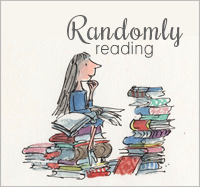










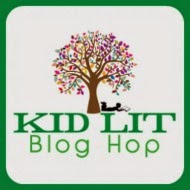

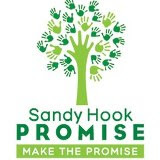

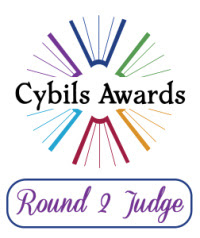
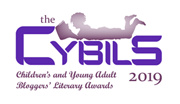

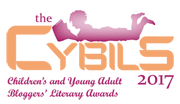


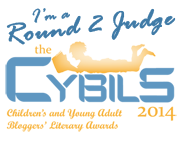
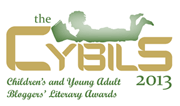
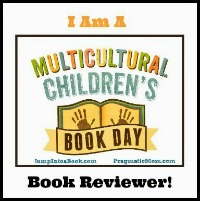


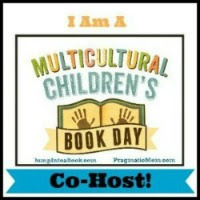

No comments:
Post a Comment